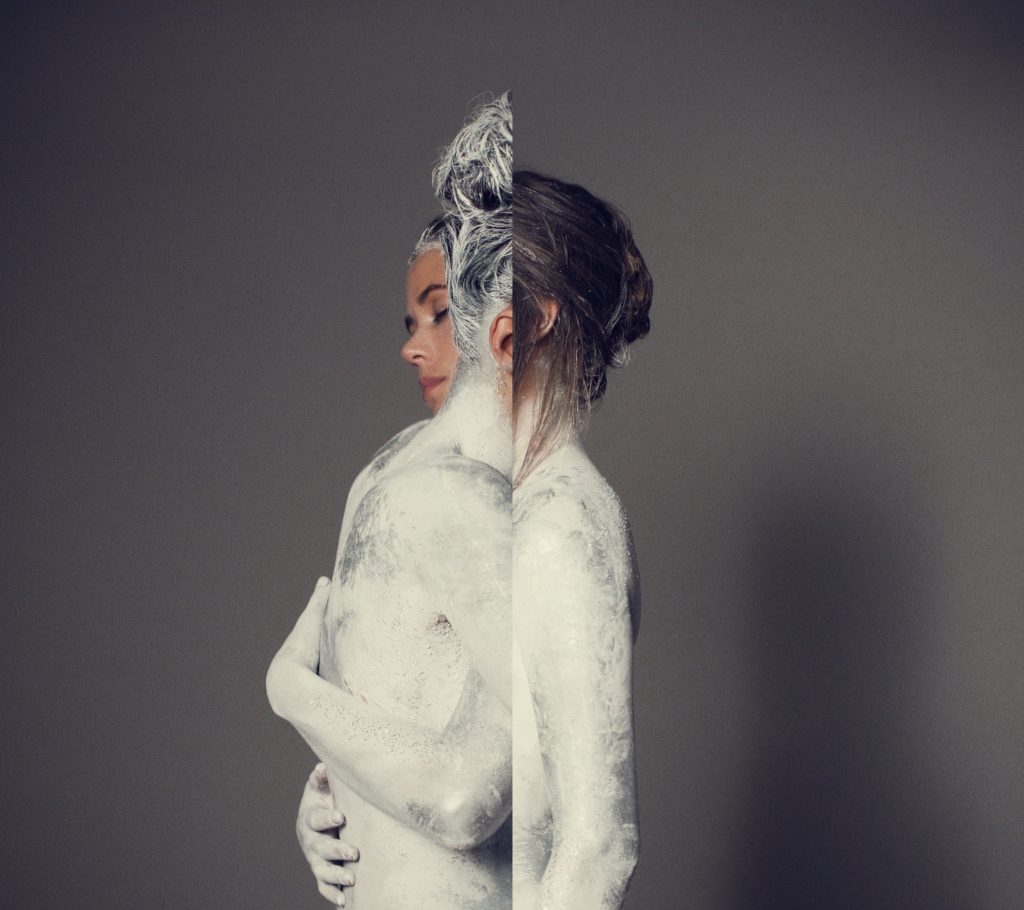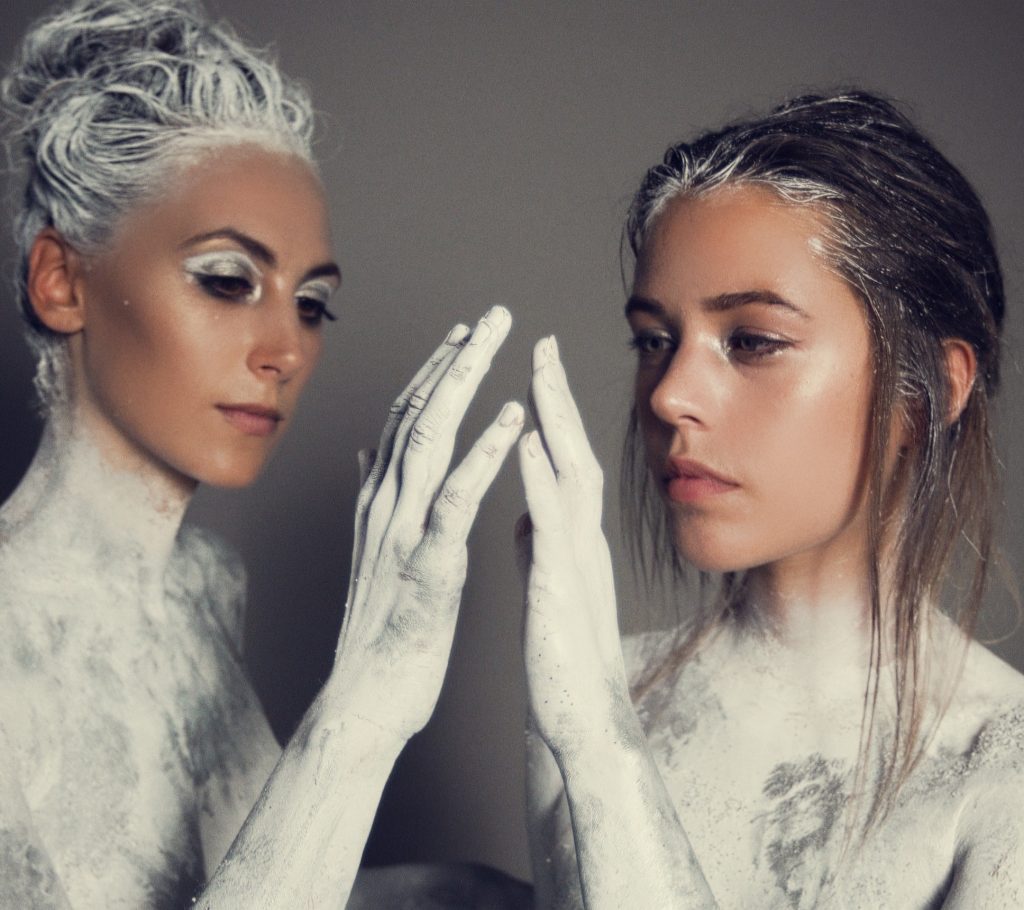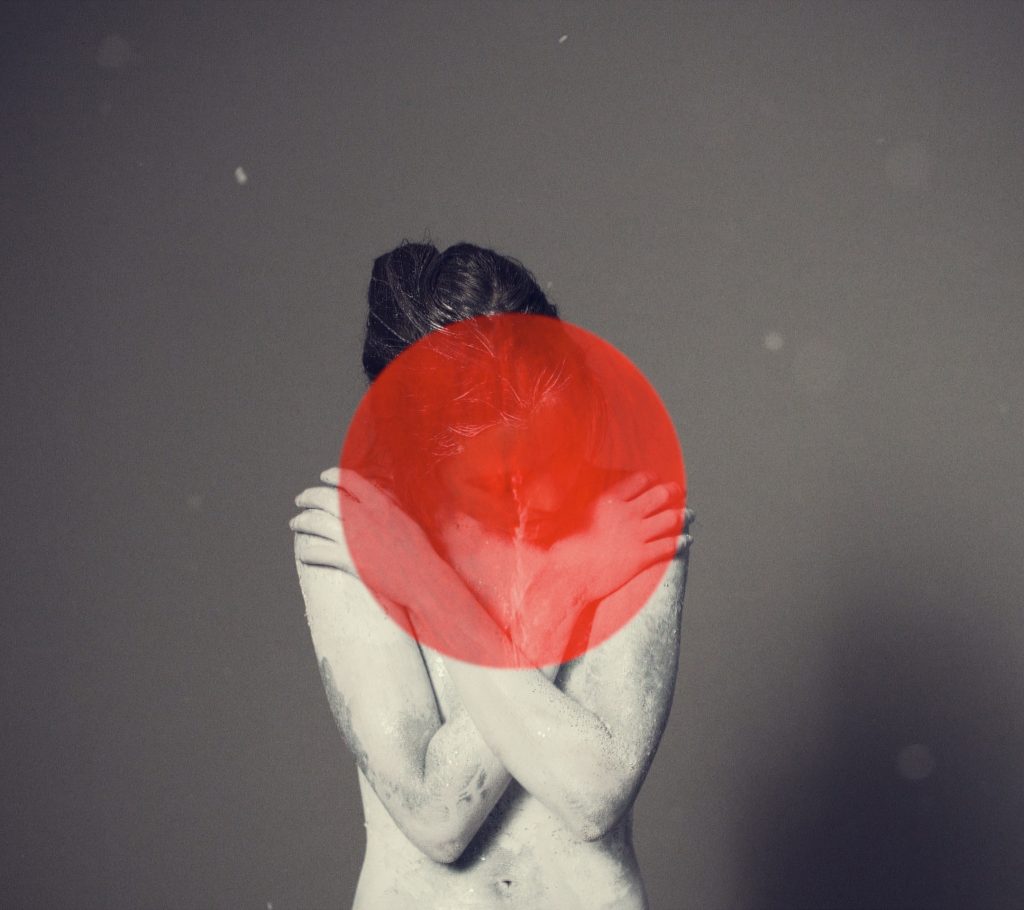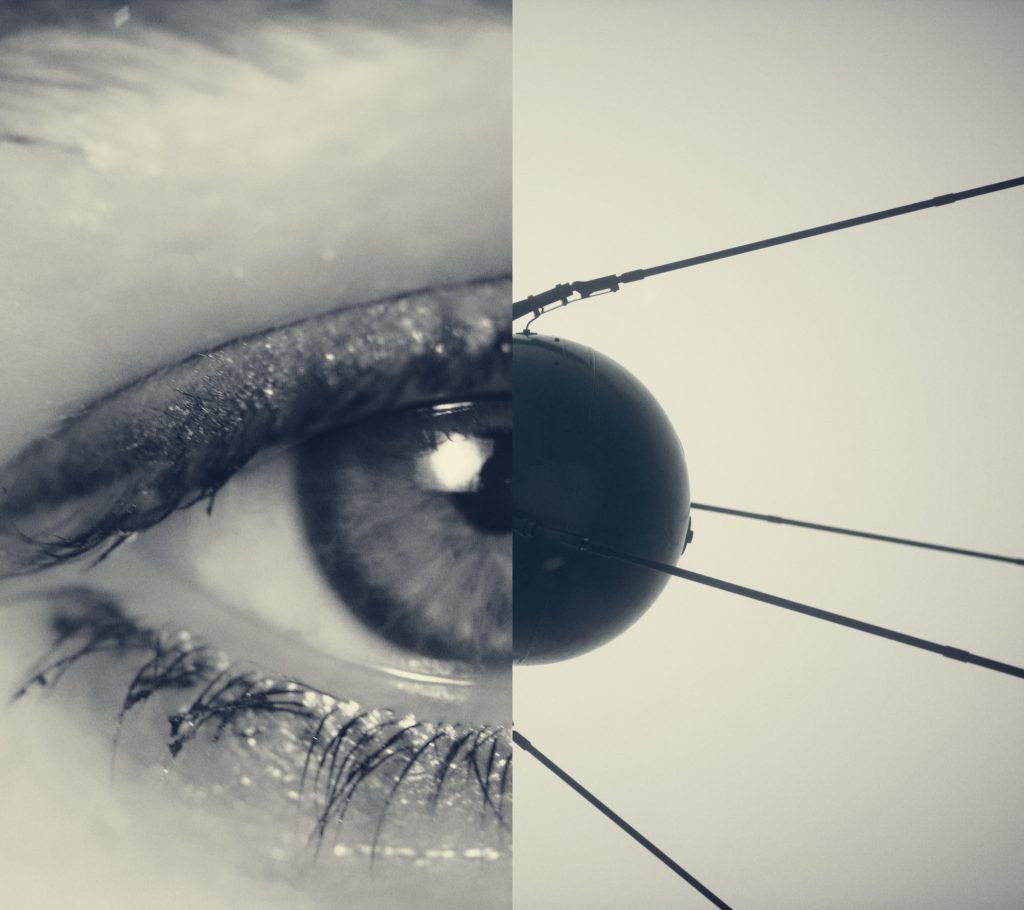BASIC presents “Satellite” Music Video Debut, Interviews with Music Artist Alpine Universe & Director Gene Ivery
Written by: Candice Lee
Imagine this concept: a music video that requires two mobile screens to view. Why is this an appealing idea? This new format for music videos alters its experience through “Joint-Screen Viewing”.


Let’s face it–the evolution of technology devices and social media platforms have altered the way we experience visual media. Before the rise of mobile devices, we were limited to communal screens and watched music videos on TV’s with friends and family–countdown music video shows with live audiences on “TRL” or “106 & Park”. But these days, content is so accessible that we click, scroll, and view content on our mobile screens without realizing how the mode in which we now experience and absorb media has also evolved… into a solo-experience. Whether this evolution is progression or regression on a social scale always seems to be up for debate. Indeed, technological advancement is taking us further than ever and paving way for huge leaps in science and communication; however, it’s impact on socialization has potential to isolate us further, behind our personal devices. We are visual creatures and our fascination with videos and moving pictures will never die down. Thus, it appears we have reached a turning point of how we, as viewers, experience media and so the burden of progression or regression now lies with the visual media creators themselves. Will they be able to unify a rapidly dividing audience and if so, how?

BASIC is proud to debut the “Satellite” music video and its new viewing experience for our readers followed by exclusive interviews with the video director, Gene Ivery, and the music artist, Alpine Universe. You need to try it out and experience it yourself to see and feel exactly why this “Joint-Screen Viewing” concept is the new groundbreaking trend for video format. You’ll need two mobile devices to join the screens so grab a friend and go to BASIC’s Instagram IGTV to check it out. While standing next to your friend, hold your screens side by side and simultaneously click these two links to view:
“Satellite” RIGHT SIDE (Music Video)
“Satellite” LEFT SIDE (Music Video)
Ready, set, go!
Here’s the fully merged version of the official music video for “Satellite” followed by exclusive Q&A Interviews with the creators.
Exclusive Q&A with the Director:
Gene Ivery is a filmmaker who explores human nature through the lens of technological progress, drawing from his background in design to create films, commercials and music videos.
“The video is presented in two screens so you will need to seek another person to watch it with. I wanted to expand on the concept of duality and use social media to bring us together in real life, just like the two protagonists in the video.
It’s a powerful experience to hold a part of the screen and be in control, feeling the shake of your hands and the imperfect syncing of the two screens; it reminds us of our organic nature, our connection with technology, and the differences between humans and machines as the intersection of nature and technology is a central theme in the music of Alpine Universe.
This video is a performance piece between two women who represent the cycle and evolution of humankind. Their movements are fluid and organic, and their look combines tribal textures with metallic paint, merging human’s primitive beginnings and technology. The goal is to convey the cyclical growth of human beings and how fast we went from our naked beginnings to the pinnacle of evolution—space exploration.
I thought it would be fun to be a bit literal and not shy away from the satellite imagery, as it’s a very original concept for a song.”
What term would you create for this new method of viewing content?
The video uses social media to bring people together, to watch and listen physically together. Shared screens? Linked screens? Frameless video? Finding buzzwords is clearly not my forte. I’ll keep it simple and go with “Joint-Screen Viewing” for now.
With this new video, technology seems to play a huge role in user experience. What inspired the music video concept for “Satellite”? What is the reason you chose to split the video into two screens?
We have a contradictory relationship with social media, it’s supposed to help us stay in touch, yet it promotes isolation. It makes it very easy for people to feel connected without being physically close. I think it’s important to share experiences at the same time and place. Just like watching a film at a movie theater is different than watching it alone at home. We want people to feel this connection.
The video plays on the duality of the two protagonists and their relationship, there is a cycle to their arcs and also a transfer of their roles, splitting the video into two screens seemed like a natural way of presenting these ideas.
This music video is intricately detailed with visuals merging and diverging together. What is the message behind these shots? Can you comment on the significance of the color red?
All the visuals stem from the original concept: duality, the cycle of life and transformation. But beyond conveying the original idea, some of these shots have evolved purely based on style. It’s important to be both conceptual and emotional. Some choices just feel good, even if they betray the concept a bit.
To me, red is the color of life; it feels like blood and flesh. It means passion and love, but at the same time can feel visceral and raw. And stylistically it adds a lot to the monochromatic look of the video.

What are your thoughts on the advancement of technology and new viewing platforms? And how does it affect the story-making process for videos?
Audiovisual content has generally been presented in a wide (theaters) or square format (beginning of TV, which then has turned into wide format too). It’s only now that we are seeing vertical video and other formats. There are people doing very interesting things with unconventional aspect ratios, I’m all for that, but I’m more interested in how technology has changed our physical relationship with the screen. We are not watching screens that are several feet away from us, we are holding the screens with our hands, bringing them right up to our faces, we can move them in space, etc. There’s an added level of intimacy between the viewer and the content.
Story can stay constant, to me it’s the style, and how you wrap that story, that is influenced by this new technology.
What is a common theme in your work? And what was your professional experience before coming up with this concept?
I like to explore technological progress and how it relates to human nature.
I’ve directed films, commercials and music videos. I also have a design background. All of these helped me build the look and concept of the video. It has a narrative component, a promotional vibe, and a clear graphic design aesthetic. It’s almost impossible to make something truly original, without influence from previous works, but it’s important to try as much as possible.
What are your plans in terms of expanding this technique?
There’s room to play with depth and scale, and the viewer could be instructed to move the screen in space in relation to the content. But it’s been a challenge figuring out the best way to create and present this video. I’ll have to think about expanding this technique when the time comes for the next video.
What were some of the major technical difficulties you encountered to achieve this duality effect?
Overall, both creatively and technically, the shots in which one character transforms into the other were the most challenging. We wanted to keep things contained within the two frames and just focus on the two characters, so it’s all about body movement and choreography. After coming up with a storyboard of shots and moves, I collaborated with Julia and Rocío onset to finalize, or sometimes completely rethink, these elements. Working with them and solving whatever problems arose was the most exciting part of the process.
Where would be your dream location to shoot for the next video?
For Alpine Universe, we should shoot the next video in Iceland! Otherwise it totally depends on the project. I have a narrative project I want to make in the Caribbean and another one in South Korea.
Do you have any new projects coming up that we can look forward to?
I’m developing a few projects and soon will have to pick one to produce; one of them is a series of narrative mini-videos for Instagram.

Exclusive Q&A with the Music Artist:
Alpine Universe is an award-winning composer and multi instrumentalist from France, known for his signature blend of orchestral and electronic dance music. His songs have been featured in major commercial campaigns and movie trailers.
“My sound is heavily influenced by nature and technology and where the two meet. The song ‘Satellite’, sung by Julia Price, is about taking perspective, breaking the mold and having the drive to stay curious and explore. The track features a string ensemble and ancient percussion over a driving electronic beat. I wanted ‘Satellite’ to act as a metaphor, from the tribal roots of human civilization to our most advanced technological endeavor: space.
I collaborated with director Gene Ivery to express these ideas visually using the new formats introduced by social media.”
How would you describe your music genre and what is a common theme in your work?
People often refer to my genre as hybrid electronic music. It is a crossover between many other styles and is characterized by recording real instruments within an electronic music production. I aim to create a sense of scale and grandiosity in my sound, this is why I lean towards orchestral ensembles, choir and heavy hitting drums.
What inspired you to write your latest song “Satellite”?
The song ‘Satellite’ is about taking perspective, breaking the mold and having the drive to stay curious and explore. It was inspired by the concept of Panspermia, the origins of life on earth and our great human endeavors such as space exploration. I wrote it while working on my debut album, but it didn’t fit the darker theme. I wanted a feel-good, catchy dance song to introduce my sound to a wider audience so I released it as a single later.
The music video for “Satellite” has a very unique approach for viewers. What are your thoughts on your recent collaboration with Gene Ivery for this new type of “Joint-Screen” viewing?
Collaborating with Gene on this project was exhilarating from the start. He understands the story, message and aesthetics of Alpine Universe better than anyone. He pushes the boundaries of film making in the same way that I try to push the boundaries of music production. It’s always a pleasure to find someone willing to take creative risks with!
We can see how the evolution of technology and new devices/platforms can change the viewing experience for videos. Do you find that it can also affect how people listen to and experience music?
Absolutely. To me, music is always associated with images: a movie, an experience, a period of your life, or simply the films we create in our heads as we listen. With “Satellite” I want to give the audience both a song, and a unique way to experience it.
Can you describe your music-making process for us?
My music making process usually starts with a voice-memo on my phone. It could be just a simple riff or a chord progression. Then, I flesh out a structure on the piano or on a computer to see if it has potential. The next step is the sound design and production (I often get stuck here…). I record, and then mix and refine a verse along with the hook. And then when I am happy, I go ahead and finish the whole song.
You seem to be multifaceted and play many instruments. Which one was your first? And which one is your favorite to play?
I started with accordion at the age of 9 but my favorite one to play is drums; it is so primal, physical and liberating!
Where was the most interesting location you’ve played or performed at? Where can we see this?
I love to play outdoors! You can find my performance videos in the snow or on top of a mountain on my YouTube channel.
Do you have any new projects coming up that we can look forward to?
Over the last 3 years I have written a few movie soundtracks and trailers. I plan on releasing a compilation of the best songs from these projects. In 2019, you can also expect a 4-track EP that acts as a sequel to my first album, along with more videos and potentially another collaboration with Gene Ivery!
www.alpineuniverse.com
www.youtube.com/alpineuniverse
www.instagram.com/alpineuniverse
Listen on Spotify
Thank you to both Gene Ivery and Alpine Universe for sharing this cool new video experience with BASIC and its readers!

MUSIC VIDEO CREDITS
Song: “Satellite”
Artist: Alpine Universe/ @alpineuniverse
Featured Singer: Julia Price/ @juliapricemusic
Director: Gene Ivery / @geneivery
Producers: Gene Ivery, Saman Yaghmai-Aledavoud / @samanmedia, Houtan Yaghmai
Executive Producer: Andy Favre
Girl: Rocío De La Grana/ @rociodelagrana
Cinematographer: Saman Yaghmai/ @samanmedia
Special Thanks: Ramin Ouladi, Nima Shogi, Gustavo Izquierdo
Location Manager: Ramin Ouladi
Hair & Makeup: Melissa Pizzamiglio
Photographer: Elena Petrova/ @elenapetrovaphotography
Song on stores and streaming services: http://smarturl.it/likeasatellite
